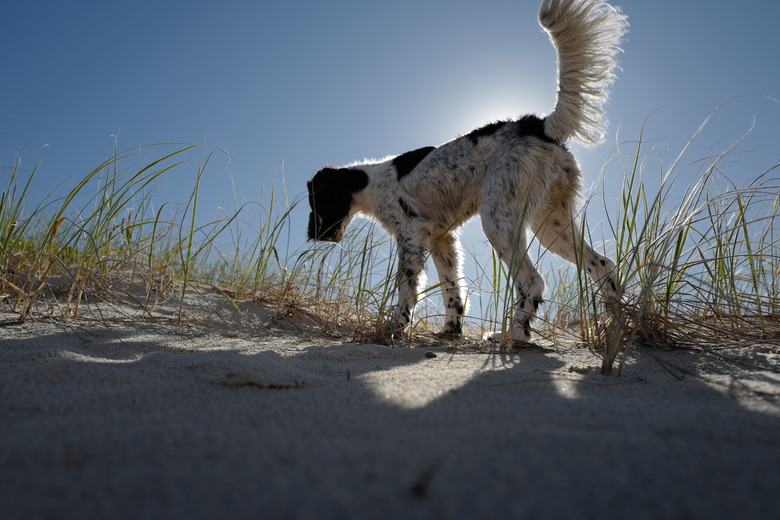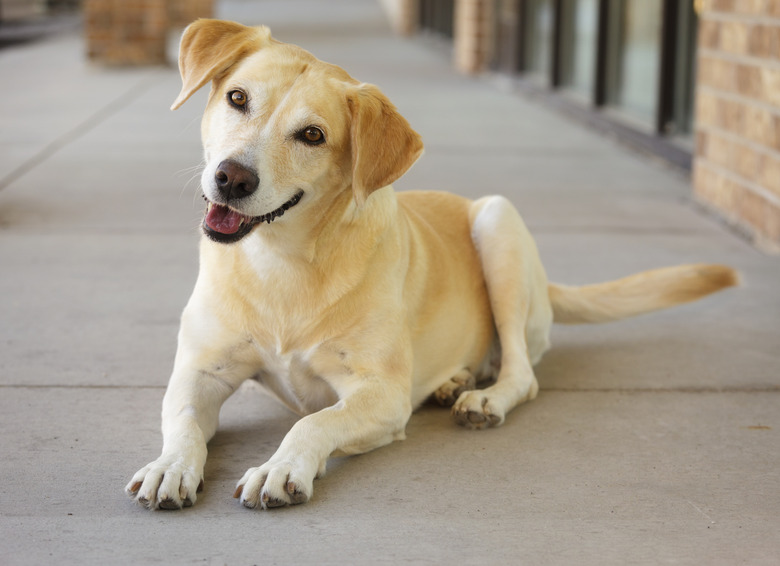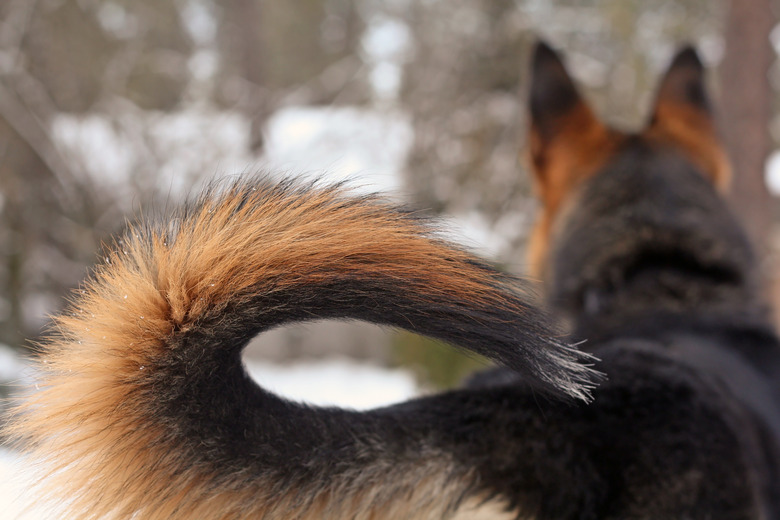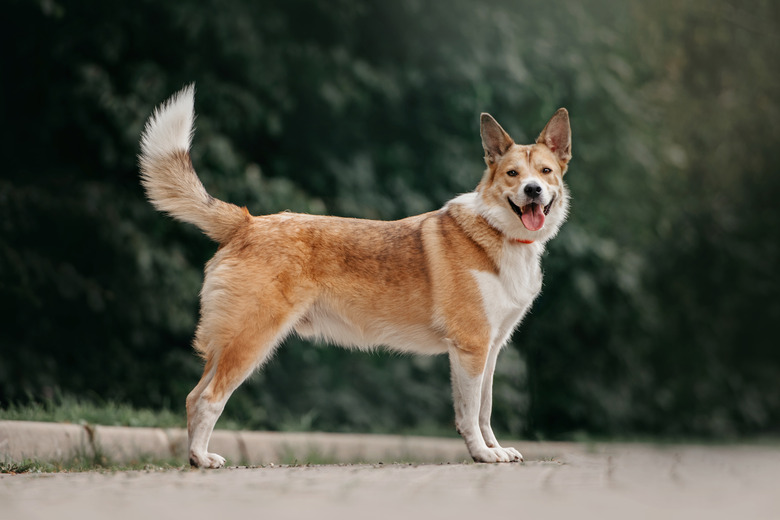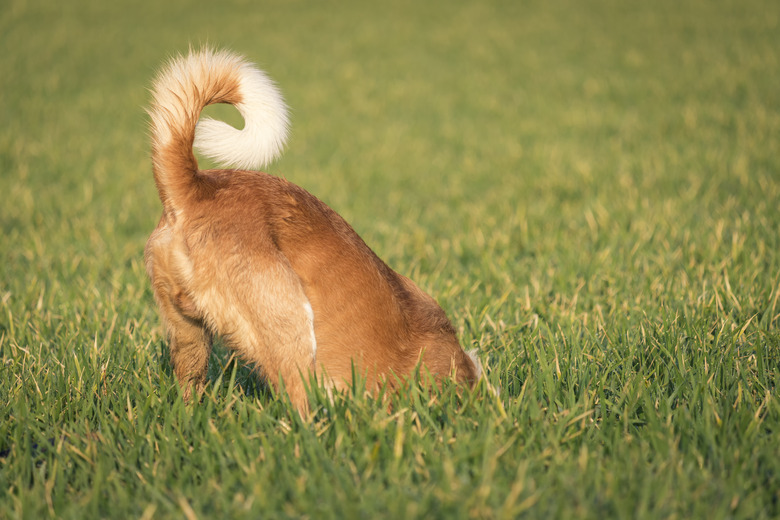8 Fun Facts About Dog Tails
- 1. A dog's tail is important body language communication
- 2. Dogs learn how to wag their tail
- 3. Dogs need their tail for balance
- 4. Dog tails spread scent from scent glands
- 5. Dog tails are an extension of the spine
- 6. How many bones are in a dog tail?
- 7. Tail shape is a result of domestication
- 8. Tail docking is illegal in many places
- 9. Why does a dog chase its tail?
- The bottom line
From long, luxurious, and fluffy, to short, cropped, or barely existing, all dogs have some form of tail which serve many purposes including telling us more than just when they're happy. Pet parents love to see a good tail wag, tailless butt wiggle, and even a good tail chasing. But how much do you actually know about your dog's tail? Here are eight fun facts you may not know about these adorable appendages.
1. A dog's tail is important body language communication
1. A dog's tail is important body language communication
A dog wagging it's tail is often used as an indication that they're happy, however this is not always the case. Many dogs may also wag their tails when they're on the attack, defense, or otherwise displeased. The differences can be subtle, but don't always assume that just because a tail is wagging, the pooch it's attached to is happy.
Tails can also communicate other emotions. For example, a tail high up, stiffly sticking straight up in the air can be an indication that the dog is feeling aggressive or defensive, while a tail tucked between the legs can mean the dog is fearful or nervous. In the latter case, it's thought that the tail is protecting the dog's private parts as well as blocking their scent glands.
Be sure to read other body language cues like panting, body rigidity, ear position, and the actual tail's position to see whether it's a happy tail wag or something else.
2. Dogs learn how to wag their tail
2. Dogs learn how to wag their tail
Dogs don't wag their tails until later in puppyhood. It typically takes a dog at least four to six weeks to learn tail wagging. This learned behavior typically comes from their littermates and/or their parents. Although, many dog's tail wags will begin instinctively even if there are no other dogs or tailed animals.
3. Dogs need their tail for balance
3. Dogs need their tail for balance
Dogs use their tails as a counterweight similar to how humans on a tightrope use a long pole for balance. The tail goes one way when the body goes the other, thus working to counterbalance weight shifts, making them more easily able to stay balanced.
4. Dog tails spread scent from scent glands
4. Dog tails spread scent from scent glands
When a dog wags their tail, the tail muscles aren't the only ones at work. Their rectum is also contracting and expanding, which aids pheromones in escaping their anal glands. The tail then wafts the pheromones into the air, spreading a scent. This can help dogs with communication, mating, and territory marking.
5. Dog tails are an extension of the spine
5. Dog tails are an extension of the spine
Don't get too rough with your dog's tail, it is after all an extension of their spinal cord. A tail contains different muscles than those along the main part of their spinal column, allowing for extra flexibility. This is why tails can be an extra sensitive part of a dog's body. Because of this, some groomers will experience trouble when lifting or working on a dog's tail if the dog has had previous back injuries.
6. How many bones are in a dog tail?
6. How many bones are in a dog tail?
Because they seem so flexible many people don't realize that a dog's tail actually has bones in it. A dog's tail is made up of muscle, cartilage, and vertebra bones which extend from their spine. The bones are larger at the base, closer to the dog's body, and gradually become smaller toward the tip of the tail. While the amount of bones in a dog's tail varies, they can contain as many as 23 vertebrae.
7. Tail shape is a result of domestication
7. Tail shape is a result of domestication
Dogs have evolved many traits while spending time as domesticated human friends. White pigmentation, floppy ears, and curly tails are a result of dogs showing their reduced aggression and increased sociability. Some breed's tails are specific to the job they were bred for. For example, many hunting dogs like retrievers and greyhounds have been bred to have tails that help with jobs like chasing, swimming, and water retrieval.
8. Tail docking is illegal in many places
8. Tail docking is illegal in many places
Tail docking, like ear cropping, became a popular practice with protection dog breeds because a docked tail is always in a straight-up, aka aggressive, position. This leads to people thinking the dog is a threat and staying out of the way of a guard dog. This practice can be extremely unfair to the dog because their emotions are often misread by humans and animals. If another dog misreads a dog's body language as threatening, it can lead to unnecessary dog fights.
But protection breeds aren't the only ones who get their tails cropped. Working dogs like the corgi also often have cropped tails to help them not get stepped on when herding. However, when your dog isn't working the job they were bred for, there's no real reason to continue this cruel practice. Similar to declawing a cat, docking a tail cuts off not only soft tissue but also bones. In this case part of the dog's spine is removed.
In some countries, like Australia, tail docking is actually illegal. Tail docking in the US is regulated but technically legal so long as a professional veterinarian performs the procedure under anesthesia. However, because it's considered to be voluntary and also quite inhumane, it's highly discouraged and not covered by pet insurance.
9. Why does a dog chase its tail?
9. Why does a dog chase its tail?
A 2012 article in Psychology Today suggested that dogs can experience something similar to obsessive compulsive disorder in humans. In dogs, repetitive actions from OCD like tail chasing or pacing, seem to be more common in bull terriers and German shepherds.
Your puppy could chase its tail because it just discovered that body part and it is fun to watch it move. An older dog could chase its tail because of boredom. If your dog is chasing its tail and seemingly trying to scratch or chew at its base, it could be worth looking into whether it is being pestered by fleas or possibly dog food allergies that are causing it distress.
The bottom line
The bottom line
Tails serve more purpose than just letting us know that our dogs are happy. Learning to read the different movements of your dog's tail can be fun and educational, and lead to a more fulfilling relationship.
